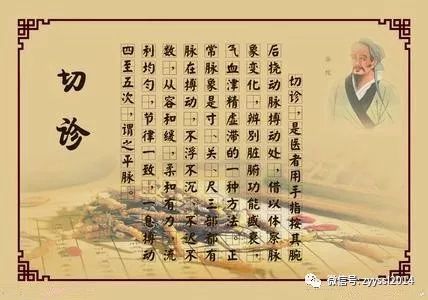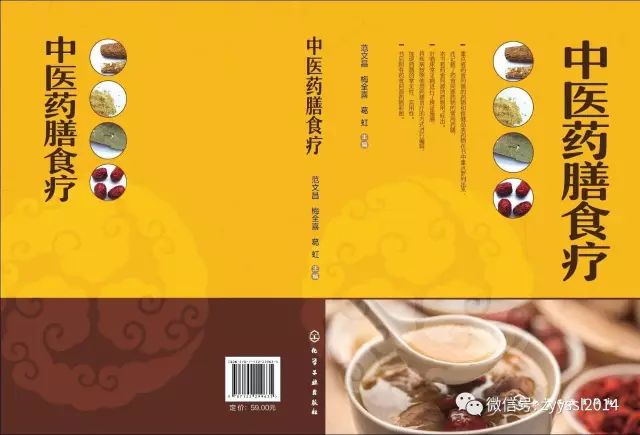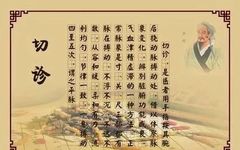The four examinations, including observation (望), listening (闻), inquiry (问), and palpation (切), are methods for diagnosing diseases, also known as “diagnostic methods”. Palpation includes two parts: pulse diagnosis and pressure diagnosis, which is a method used by practitioners to understand the patient’s condition by touching, feeling, pressing, and applying pressure to specific areas of the body.



(1) Pulse Diagnosis
Pulse diagnosis, also known as “pulse taking” or “pulse examination”, is a method where the physician uses their fingers to press on the patient’s arteries to explore the pulse pattern and understand the changes in the patient’s condition.
1. Locations for Pulse Diagnosis and the Three Positions of the Pulse
The commonly used location for pulse diagnosis is the “cun kou” (寸口), which refers to the superficial area of the radial artery at the wrist.
“Cun kou” is also known as “qi kou” (气口) or “pulse mouth”. It is divided into three parts: cun (寸), guan (关), and chi (尺). The area over the high bone of the wrist (radial styloid) is called “guan”, the area before the wrist (wrist end) is “cun”, and the area behind the elbow is “chi”. Each hand has three parts: cun, guan, and chi, totaling six pulses.
Regarding the division of the three parts of the pulse corresponding to the internal organs, there have been many discussions throughout history, but the basic spirit is consistent. The commonly used clinical division method is: right cun corresponds to the lung, right guan corresponds to the spleen and stomach, right chi corresponds to the kidney (mingmen), left cun corresponds to the heart, left guan corresponds to the liver, and left chi corresponds to the kidney. This reflects the principle of “upper (cun pulse) corresponds to the upper body, lower (chi pulse) corresponds to the lower body”. This has certain reference significance in clinical practice, but the method of correlating the three parts with the internal organs should not be viewed mechanically; it requires comprehensive analysis of specific conditions to arrive at a more accurate diagnosis.
Additionally, the pulse at the cun kou is also the easiest to palpate, which is one reason for its exclusive use in pulse diagnosis.
2. Characteristics and Variations of the Normal Pulse
The normal pulse, also known as “ping mai” (平脉) or “regular pulse”, has a rhythm of one breath equating to four beats, with a pulse that is gentle, strong, composed, rhythmic, and neither fast nor slow. It varies normally with physiological activities and environmental conditions. In pulse theory, a normal pulse has three main characteristics: first, it is “shen” (有神), meaning the pulse is gentle and strong; second, it has “wei” (有胃), meaning the pulse comes and goes rhythmically and consistently; third, it has “gen” (有根), meaning that even when pressed deeply at the chi position, it still has a strong and steady response.
3. Pathological Pulses and Their Correspondence to Diseases
Pathological pulses reflect changes in the pulse pattern corresponding to diseases, known as pathological pulses. Generally, any pulse pattern outside the normal physiological range and individual physiological characteristics is considered a pathological pulse.
(1) Floating Pulse
[Main Disease] The floating pulse indicates an exterior condition. A strong floating pulse indicates an exterior excess, while a weak floating pulse indicates an exterior deficiency.Similar Pulses:散脉 (san mai): A large floating pulse without root, which is large in shape but weak, and cannot be felt with slight pressure. This indicates a depletion of vital energy and a critical condition of the internal organs. It is often seen in critical illness.芤脉 (kao mai): A large hollow floating pulse, similar to pressing on a scallion tube. It is often seen after significant blood loss or excessive sweating.
(2) Deep Pulse
[Main Disease] Indicates that the pathogenic factor is internal. A strong deep pulse indicates an internal excess, while a weak deep pulse indicates an internal deficiency.Similar Pulses:伏脉 (fu mai): A pulse that is deeper than the deep pulse, requiring heavy pressure to feel, and may even be temporarily hidden. Commonly seen in conditions of collapse, obstruction, or severe pain.牢脉 (lao mai): A solid, large, and taut pulse that does not respond to light or moderate pressure, only to deep pressure. It is often seen in conditions of internal masses, stagnation of phlegm, or food accumulation.
(3) Slow Pulse
[Pulse Pattern] The pulse is slow, with fewer than four beats per breath (equivalent to a pulse rate of less than 60 beats per minute).Similar Pulses:缓脉 (huan mai): Still four beats per breath, but the pulse has a slow sensation. Commonly seen in conditions caused by dampness and spleen deficiency.
(4) Rapid Pulse
[Pulse Pattern] The pulse comes five or more times per breath (equivalent to a pulse rate of over 90 beats per minute), with a sensation of urgency.[Main Disease] Indicates a heat condition. A strong rapid pulse indicates real heat, while a weak rapid pulse indicates false heat.Similar Pulses:疾脉 (ji mai): A rapid pulse that comes seven or more times per breath. Its characteristic is a rapid and agitated sensation. It can be seen in acute heat conditions and during severe exhaustion.
(5) Weak Pulse
[Pulse Pattern] The pulse is weak and lacks strength, with a sensation of emptiness when pressed deeply. All three parts of the pulse are weak, with a subtle movement under the fingers, giving a soft and empty feeling.
[Main Disease] Indicates a deficiency condition, often due to insufficient qi and blood or organ deficiency. Insufficient qi fails to push blood through the vessels, resulting in a weak pulse; insufficient blood fails to fill the vessels, leading to an empty pulse. Organ dysfunction, loss of essence, blood, and fluids, often seen in chronic wasting diseases, can also present with a weak pulse. High fever injures yin, leading to fluid loss, bleeding, or post-diarrhea fluid deficiency, making the weak pulse more pronounced. Clinically, a weak pulse may accompany a floating pulse, indicating qi deficiency or unstable defensive qi; it may accompany a hesitant pulse, indicating blood deficiency; it may accompany a slow pulse, indicating yang deficiency; and it may accompany a rapid pulse, indicating yin deficiency.
(6) Full Pulse
[Pulse Pattern] The pulse in the three parts (cun, guan, chi) is strong and forceful. The pulse comes and goes robustly, responding strongly to both light and heavy pressure.
[Main Disease] A full pulse indicates the accumulation of yang fire, leading to delirium, frequent vomiting, or may indicate yang toxicity or food injury. Constipation or gas pain may occur. A full pulse at the cun indicates heat in the face, sore throat, and a feeling of fullness in the chest; at the guan indicates heat in the spleen; at the chi indicates pain in the lower back and intestines. A full pulse indicates an excess condition, often seen in internal heat accumulation, phlegm stagnation, or food accumulation. The “Annotated Pulse Classic” states: “Fullness indicates yang. When felt, it is continuous and abundant, indicating fullness. It indicates hidden yang within, spleen deficiency, and fatigue.”
(7) Slippery Pulse
[Main Disease] Indicates phlegm, food stagnation, or internal heat. A normal pulse is slippery and harmonious, indicating fullness of the nutritive and defensive qi. A slippery pulse is also commonly seen in pregnant women, indicating a rich and harmonious blood and qi.Similar Pulses:动脉 (dong mai): A pulse that is slippery and rapid, with a strong sensation, but the area of pulsation is shorter, indicating shock or pain.
(8) Hesitant Pulse
[Main Disease] Indicates qi stagnation, blood stasis, essence injury, blood deficiency, phlegm, or food stagnation.
(9) Thin Pulse (also known as Small Pulse)
[Main Disease] Indicates deficiency of both qi and blood, as well as dampness. Similar Pulses:襦脉 (ru mai): A floating and thin pulse that can be felt with light pressure but is not obvious with heavy pressure. Indicates deficiency and dampness.微脉 (wei mai): Extremely thin and soft, almost imperceptible. Indicates heart and kidney yang deficiency or sudden collapse, as well as deficiency of yin, qi, and blood.弱脉 (ruo mai): A deep, thin pulse that lacks strength. Indicates deficiency of both qi and blood.

The book “Dietary Therapy in Traditional Chinese Medicine” includes:
1. A focus on listing medicinal foods and health products, with commonly used medicinal dishes marked with an asterisk.
2. A compilation of common clinical diseases according to the standards of practicing pharmacists, with differential diagnosis and dietary recommendations for each common disease, reflecting the practicality and commonality of dietary therapy.
3. The book includes color illustrations of medicinal foods at the end.
After years of hard work, the team has organized medicinal foods and included commonly used dishes, hoping to provide references for reasonable dietary therapy and contribute to the development of health. This book is the first of its kind to organize medicinal foods, and such a book has not yet been seen in the market.


For business cooperation or other inquiries, please contact:
13560051131

